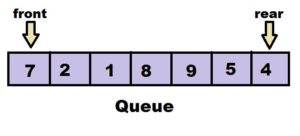Operations on data structures are the actions we perform to manipulate, access, and manage data stored within them. These operations form the basis of countless algorithms and are essential for efficient problem-solving in computer science. Understanding these operations is key to writing efficient, maintainable, and scalable code.

5 Essential Operations on Data Structures
1. Insertion: Adding New Data Elements
Insertion is the process of adding a new data element to an existing data structure. The way you insert data depends on the specific type of data structure:
- Arrays: Inserting at the end is usually straightforward, but inserting in the middle requires shifting elements.
- Linked Lists: Insertion is efficient, as you only need to update pointers.
- Trees: Insertion maintains the tree’s specific order or balance (e.g., in binary search trees).
- Hash Tables: Insertion involves computing a hash value to determine the element’s storage location.
2. Deletion: Removing Data Elements
Deletion removes a data element from the data structure. Like insertion, the efficiency of deletion varies depending on the data structure:
- Arrays: Deleting from the end is easy, but deleting from the middle requires shifting.
- Linked Lists: Deletion is often efficient, as it simply involves updating pointers.
- Trees: Deletion can be more complex to maintain the tree’s structure and balance.
- Hash Tables: Deletion involves locating the element based on its key and then removing it.
3. Traversal: Visiting Each Element
Traversal involves accessing each element in the data structure exactly once. This is often used to process data, perform calculations, or display the contents of the structure. Traversal algorithms differ depending on the structure:
- Arrays: Typically done using a simple loop.
- Linked Lists: Follow pointers from one node to the next.
- Trees: Several traversal methods exist, like pre-order, in-order, and post-order.
- Graphs: Use depth-first search (DFS) or breadth-first search (BFS) algorithms.
4. Searching: Finding Specific Data
Searching locates a particular data element within a data structure. The choice of search algorithm depends on the data structure and whether it is sorted:
- Linear Search: Simple, sequential search through each element.
- Binary Search: Efficient for sorted data, repeatedly dividing the search interval in half.
- Hash Table Search: Extremely fast lookup using hash functions.
5. Sorting: Organizing Data
Sorting arranges the elements of a data structure in a specific order (ascending or descending). Efficient sorting algorithms are critical for tasks like data analysis, searching, and reporting.
- Common Sorting Algorithms: Bubble sort, insertion sort, selection sort, merge sort, quicksort, heap sort, etc.
FAQs: Operations on Data Structures
Q: Which operation is the most time-consuming in an array?
A: Insertions and deletions in the middle of an array can be time-consuming as they involve shifting elements to maintain order.
Q: Why is traversal important?
A: Traversal allows you to process or display each element in the data structure, making it a fundamental operation for many algorithms.
Q: Which searching algorithm is the fastest?
A: Hash table search (hashing) is generally the fastest, offering near-constant time lookup in the average case.
Q: Why is sorting important for searching?
A: Sorting enables the use of efficient search algorithms like binary search, significantly reducing the time it takes to find an element in a large dataset.